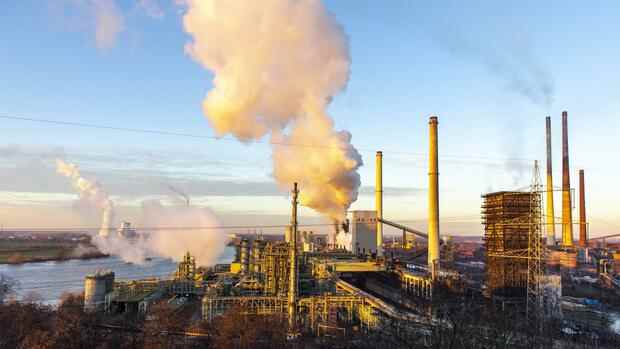At the Handelsblatt annual conference “Zukunft Stahl”, the German steel producers are demanding more help from politicians.
(Photo: imago images / Jochen Tack)
Munich, Dusseldorf The German steel industry is pushing for investment security on the way to green steel. “The political framework for investments worth billions has yet to be created,” said Hans Jürgen Kerkhoff, President of the Steel Industry Association, at the Handelsblatt annual conference “Zukunft Stahl”.
The industry has an “effective lever for CO2 reduction,” said Kerkhoff. But time is pressing. “We need more speed.” What is needed is “state support for investments in low-CO2 processes, which are not yet economical”.
The increased electricity prices also required action. “If you want climate protection, you also need better location conditions for industry.”
Green steel, made with hydrogen instead of carbon, is currently the hot topic in the industry. Because the steel industry accounts for 30 percent of industrial emissions in Germany. According to experts, if Germany wants to achieve its climate goals, around a third of primary steel production will have to be converted to direct reduction technology with hydrogen by 2030, and all blast furnaces will have to be replaced by 2045.
Top jobs of the day
Find the best jobs now and
be notified by email.
The problem with this: The green steel is more expensive than conventionally produced steel. According to a new study by BCG, which is available to the Handelsblatt, the cost per tonne of steel would increase by around 70 percent by 2030 if you switched to the hydrogen process. This corresponds to an increase of around 260 euros per ton.
Higher prices for green steel
According to the calculations, the price of a mid-range car using only green steel would increase by almost 250 euros if the increased costs were passed on directly. With a washing machine it would be less than twelve euros.
For European manufacturers, the transformation could be an opportunity, BCG experts write. They could move away from a purely cost-driven business and towards a premium strategy in which customers who want to reduce their carbon footprint also pay higher prices.
Many manufacturers have announced correspondingly large goals. Thyssen-Krupp’s steel production should be climate-neutral by 2045. However, the necessary investments for the industry are in the double-digit billion range in Germany alone.
The companies are therefore waiting for the government to give the go-ahead for large-scale support. There are corresponding signals from the federal government. The coalition partners had agreed “that what is needed will also be financed,” Economics Minister Robert Habeck said at the Handelsblatt energy summit in January.
But Brussels is also in demand, according to Kerkhoff. “Germany can only go the way in Europe and with Europe.” The planned revision of European emissions trading threatened additional costs of up to 16 billion euros by 2030 for the German steel industry.
Industry wants to keep steel production in Germany
The Saarland Secretary of State for Economic Affairs, Jürgen Barke, said that support was also needed for the operating costs. Production must be prevented from being relocated to other locations. It’s not just about fighting climate change. The corona pandemic has shown how important it is not to be dependent on third parties for the raw materials.
Meanwhile, companies are pushing the issue. Thyssen-Krupp gave the go-ahead for a real laboratory at the Duisburg location this week. There are plans to build a pipeline and expand the use of hydrogen to cover the entire blast furnace 9.
Thyssen-Krupp was one of the pioneers in the industry. In 2019, the group was the first company in the world to blow hydrogen into a running blast furnace in Duisburg. The hydrogen replaces coal dust as an additional reducing agent.
Last year, the production of crude steel in Germany rose again for the first time in three years – by twelve percent to a good 40 million tons. However, the manufacturers are still below the level of 2017 (a good 43 million tons).
More: Steel industry insists on quick commitments from politicians
